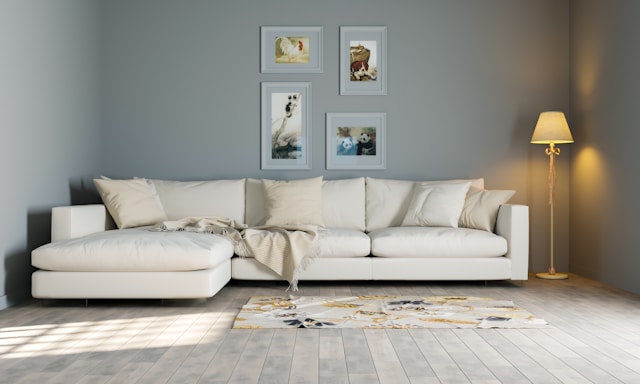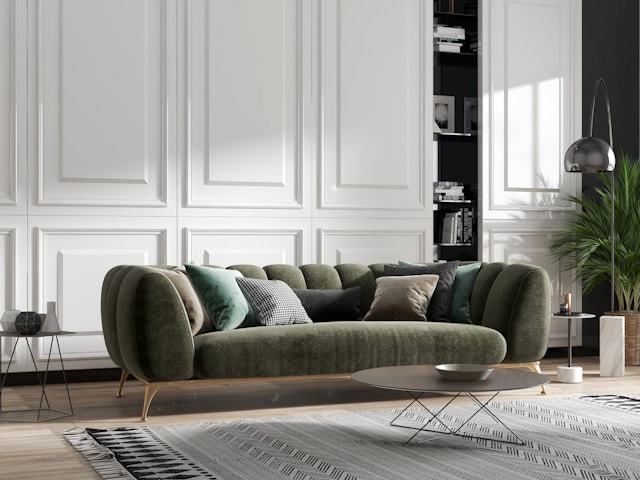Furniture manufacturing combines artistry with functionality, resulting in pieces that not only occupy our spaces but also define them. It is a complex, multi-step process that starts with design conception and ends with the final product arriving in homes and businesses worldwide.
In this section, we’ll explore the fascinating journey from raw materials to finished goods, highlighting the skilled craftsmanship, innovative design, and advanced technology that together bring beauty and utility into our daily lives. Join us as we delve into the intricate world of furniture manufacturing and uncover the stories behind the furnishings that enrich our environments.
Ideation and Design
The initial stage in furniture manufacturing is where creativity blooms—ideation and design. Designers draw inspiration from various sources, including current trends, historical periods, or the natural world, to create aesthetic and functional designs. They consider various factors such as ergonomics, materials, and sustainability, blending them with artistic expression to blueprint the foundation of new furniture pieces.
Prototyping follows the design phase, transforming sketches and ideas into tangible models. These prototypes are crucial for assessing the look and feel of the furniture, as well as its functionality and comfort. Feedback at this stage can lead to multiple iterations before settling on a final design that meets both aesthetic standards and practical requirements.
Material Selection
Selecting the right materials is pivotal to the success and sustainability of furniture. Quality woods, metals, textiles, and other composites are chosen based on durability, texture, and environmental impact. The choice of materials affects not only the appearance and longevity of the furniture but also its ecological footprint, driving manufacturers to consider renewable and recyclable options.
Each material has its own set of processing requirements, which can include cutting, curing, or treating to ensure it meets safety and quality standards. Expertise in material science helps manufacturers balance cost-efficiency with quality, ensuring the final product is both robust and visually appealing, while also being conscious of their environmental responsibilities. From bedroom drawers to office chairs, every piece of furniture carries its own unique material story. Plus, with technological advancements and innovative techniques, manufacturers continue to find new ways to push the boundaries of material selection.
Manufacturing and Craftsmanship
Once the design is finalized and the materials selected, the actual process of manufacturing begins. This involves precision and craftsmanship, whether it’s hand-carved details in wood or the precision cutting of metal. Skilled artisans and craftsmen bring the design to life, using both traditional techniques and modern machinery to shape and assemble the furniture pieces.
Technology has revolutionized this stage, with the incorporation of automation and computer-aided manufacturing (CAM) systems. These technological advancements increase efficiency and accuracy but the human touch remains irreplaceable for certain artisanal elements and quality checks, ensuring that each piece meets the high standards set forth by the design.
Finishing Touches
After the main structure of the furniture is crafted, it undergoes the finishing process. This includes sanding, staining, or painting, which enhances the visual appeal and offers a layer of protection. It’s a meticulous process that can make all the difference, turning an ordinary item into a striking piece of furniture that catches the eye and withstands the test of time.
Quality control is of utmost importance in this stage, with thorough inspections to ensure that the finish is flawless. The piece may also be assembled with additional fixtures or hardware, which requires precision to ensure that all parts fit together seamlessly and function as intended, leading to a final product ready for the showroom.
Packaging and Distribution
The last phase of the furniture manufacturing process involves packaging and distribution. Furniture needs to be packaged securely to prevent damage during transport, using materials that protect it from knocks and scratches while also being mindful of waste and environmental impact. Strategic packaging design is employed to make unboxing easy and intuitive for the customer.
Distribution networks then take over, moving the finished furniture from the factory floor to retail outlets or directly to consumers’ homes. Logistics plays a crucial role in this phase, necessitating the coordination of various modes of transport and storage solutions to ensure that the furniture arrives in perfect condition, completing its journey from an idea to a beloved piece in a customer’s home.

In conclusion, the furniture manufacturing process represents a symphony of creativity, precision, and sustainability. At every stage, from the initial sketches to the final distribution, a myriad of professionals bring their expertise to bear, ensuring that each piece of furniture not only looks exceptional but also stands up to the rigors of daily use.
This journey from concept to consumer showcases the industry’s commitment to blending form and function, all the while pushing the envelope in terms of design innovation and ecological responsibility. As we surround ourselves with these meticulously crafted items, we do not merely fill our spaces with objects; we create an environment that reflects our values, aesthetics, and the ever-moving tide of technology and craftsmanship.







